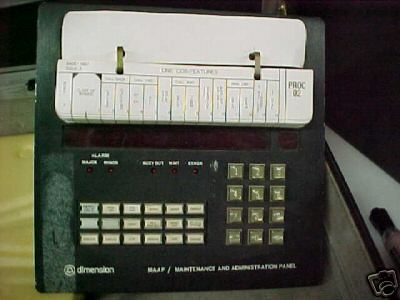Kids, want to set up a PBX like it was the 1970s? Get your thumbs ready by playing some Atari and Pac Man, before heading to your assignment of adding a couple thousand stations and hundreds of trunks. Such finger exercises are similar to Pac Man!

While this “console” doesn’t take calls in a business, it does however require usage to make changes. This was Western Electric’s MAAP – The Maintenance And Administration Panel, better known by it’s acronym. Eighteen buttons plus your dialpad. While such practices are common in smaller systems at an assigned extension and port; this was the practice done on larger systems “back in the day”.
It wasn’t till the end of the 1980s, AT&T sold one of their own UNIX PCs to allow MAAP to be done similar to the terminal sessions found in the System 75. Data was entered similar to a System 75, but the app would take that data then spit it out through the serial connection the similar way it would’ve been done in the MAAP, a series of commands of pressing buttons here and there plus the numbers and/or letters on the keypad.
This was effectively out of date by the mid 1990s with the introduction of the Definity ECS (G3r V5) that merged the two systems. In it’s early days of the Definity G2, through the limited documentation AT&T released, it’s preferred administrative method was the UNIX box despite support for the MAAP.
MAAPs were not uncommon. Other vendors had used a special set to do system administration. In today’s smaller systems, non VOIP multi line phones at specific wired extensions can act as administrative terminals. PBXs however require dummy terminal, Web or app based administration.